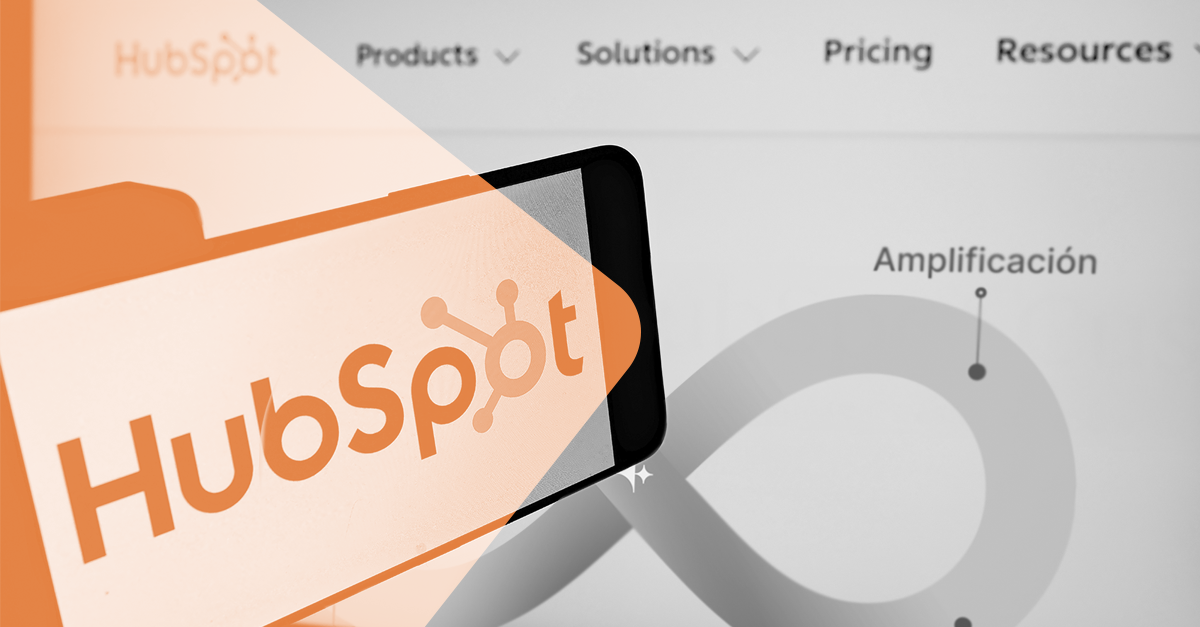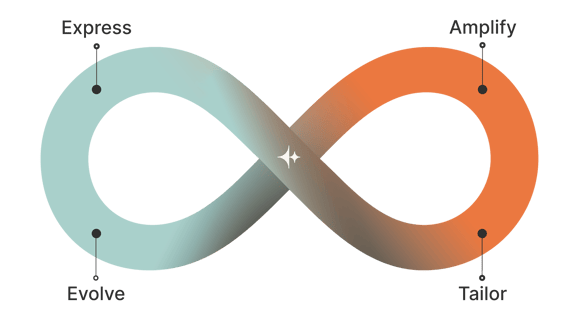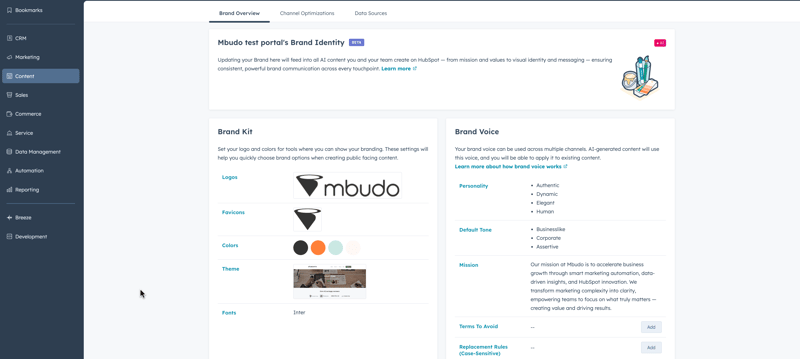
During INBOUND 2025, HubSpot’s annual event where it unveils its latest updates and innovations, we witnessed the arrival of a major shift in the digital marketing paradigm: the HubSpot Loop. This new model is designed to replace the traditional conversion funnel with a far more dynamic, circular, and AI-powered approach.
At mbudo, a HubSpot Diamond Partner Agency, we know firsthand that customers no longer interact with brands the way they used to. Today, they engage through multiple channels and expect personalized experiences. That’s precisely why the Loop perspective offers a more organic and sustainable path to growth.
Below, we’ll walk you through everything you need to know about the HubSpot Loop and how to start incorporating it into your Inbound Marketing strategies in the age of AI.
What is the HubSpot Loop?
The HubSpot Loop is a methodology that replaces the linear flow of the traditional funnel with a continuous growth cycle. Its goal is to connect marketing, sales, and service around a process that learns, optimizes itself, and repeats over time.
Unlike the traditional funnel, the Loop doesn’t end with the sale. Instead, every interaction generates new data that feeds back into the entire system. Through marketing automation and AI-powered tools, the Loop turns every customer touchpoint into an opportunity for improvement.
This approach builds on the core principles of Inbound Marketing, where attraction and retention depend on delivering value at every stage of the customer journey. With Loop Marketing, that journey is no longer a straight path — it becomes a constant flow of information, content, and engagement.

The 4 Stages of the HubSpot Loop
1. Express: Define Your Identity
The first stage of the Loop is called “Express”, where brands define their purpose, tone, and unique value proposition. This stage is essential for the effectiveness of the entire cycle, as it ensures message consistency and an emotional connection with the customer.
Having a clear identity allows for more consistent content creation and strengthens interdepartmental collaboration. When marketing and sales share the same vision of the customer, the result is a more aligned strategy.
2. Tailor: Personalize the Experience
The second stage, “Tailor”, focuses on personalization at scale. Using CRM data and HubSpot’s AI capabilities, it’s possible to adapt messages, content, and channels to each type of customer.
Personalization is no longer optional—it’s expected. HubSpot’s AI tools enable automated segmentation, dynamic messaging, and behavior prediction. This allows brands to deliver unique experiences at every interaction as part of an intelligent marketing automation strategy.
3. Amplify: Expand Your Reach
In the “Amplify” stage, the goal is to maximize content visibility across all channels—from social media to AI-driven search engines. This expansion allows brands to connect with the right audience at the right time.
Integrated tools like the Marketing Hub make it easy to plan, publish, and measure results from a single platform. This enables brands to optimize their investment and increase campaign ROI. The multichannel approach is a strategic use of HubSpot’s digital marketing tools, helping maintain consistency at every customer touchpoint.
4. Evolve: Learn and Optimize
The final stage, “Evolve”, is the most powerful part of the Loop. Here, data analysis comes into play to learn from every interaction and continuously improve marketing and sales strategies.
The key is constant measurement, evaluation, and adjustment. HubSpot’s custom reports and dashboards provide real-time insights, enabling agile decision-making. This continuous improvement process relies on CRM dashboards, where teams can identify patterns and act quickly.
Why the Loop Replaces the Traditional Funnel
The traditional funnel was the standard marketing model for years, but consumer behavior has changed dramatically. Today, users don’t follow a linear path—they research, compare, and purchase across multiple devices and channels.
The HubSpot Loop addresses this new reality with a model that is more adaptable and customer-experience-focused. Its main advantages include:
-
Continuous customer insight: There’s no end point—every action generates data that feeds the next step.
-
True personalization: AI and automation enable relevant content delivery at the right moment.
-
Constant optimization: Learnings are applied in real time, improving campaign effectiveness.
-
Team alignment: Marketing, sales, and service share the same information in the CRM.
The Loop naturally fits into CRM-based digital transformation strategies, where data, technology, and user experience come together to drive sustainable growth.
How to Apply the Loop in Your Marketing Strategy
Implementing the Loop in your business doesn’t require starting from scratch—it’s about reorganizing processes around a circular, connected logic.
1. Analyze Your Starting Point
Conduct an audit of your current processes. Identify which parts of your strategy are still linear and where you can integrate automation or AI.
-
Evaluate the quality of your CRM data: is it up-to-date, segmented, and centralized?
-
Identify how many customer interactions are actually being tracked.
-
Detect the “blind spots” in your funnel where opportunities are lost or follow-up is missing.
2. Define Your Proposition (Express)
The Loop begins with clearly defining and communicating your brand identity.
Use HubSpot Content Hub’s new Brand Identity tool to define your branding, tone, messaging, and positioning. Access it via Content > Brands. This ensures that all your content—website, blog, emails, and social media—reflects consistent brand messaging.

This guarantees that the Express phase establishes the base for all Loop actions: who you are, who you speak to, and what you promise.
3. Segment and Personalize (Tailor)
In the Tailor phase, you turn your data into personalized experiences. HubSpot allows you to create smart segments and automation flows that adapt messages to each contact’s behavior and profile.
-
Create dynamic lists based on criteria such as email interactions, form submissions, or website visits.
-
Use automated workflows to deliver content tailored to language, country, or lifecycle stage.
-
Implement dynamic content in landing pages or emails that changes based on the contact’s history.
-
Activate HubSpot’s AI features to suggest email subject lines or text variations that are more relevant.
This transforms your communication from mass messaging into a genuine conversation with each customer.
4. Amplify Your Presence (Amplify)
Once your messages are personalized, it’s time to amplify their reach.
-
Plan and schedule social media posts from HubSpot Marketing Hub to maintain visual and tonal consistency.
-
Create multichannel campaigns integrating blog, email marketing, social media, and ads.
-
Use HubSpot’s Campaigns tool to unify multichannel actions, allowing consolidated performance metrics by initiative.
-
Optimize content for Answer Engine Optimization (AEO) to increase visibility on AI-powered search engines and chatbots.
The Amplify stage multiplies the impact of your messages and connects your brand with users across all spaces where they seek information or inspiration.
5. Evaluate and Improve (Evolve)
The Evolve phase is the most strategic: here, you turn data into actionable decisions.
-
Design custom dashboards in HubSpot integrating marketing, sales, and service metrics.
-
Track key indicators like campaign engagement, MQL-to-SQL conversion rates, or average deal closing time.
-
Use AI tools to identify patterns or forecast trends.
-
Adjust workflows, segmentations, and campaigns based on the results obtained.
This process turns the Loop into a living system, where every insight improves the next iteration. The more you repeat the cycle, the more precise your strategies become, and the greater your return.
Conclusion
The HubSpot Loop represents the natural evolution of Inbound Marketing: a model where artificial intelligence, personalization, and continuous improvement work together to drive sustainable growth.
Adopting the Loop means moving from a transactional mindset to building lasting relationships with your customers, powered by data and technology. And that’s exactly what we do at mbudo: helping you design, automate, and optimize strategies that deliver real results.
If you want to discover how to apply the HubSpot Loop in your business, contact us today, and we will guide you step by step in transforming your digital strategy.

Andrea Barceló Cano
Andrea is an Inbound Marketing Specialist at mbudo. She is passionate about writing and creating content, so you will probably find her typing with dozens of tabs open, hunting ideas on social networks, or thinking about the next post.
It may interest you
LATEST
BLOG POSTS
SUBSCRIBE TO MBUDO BLOG
And get your inbound news directly in
your inbox, once a month.


